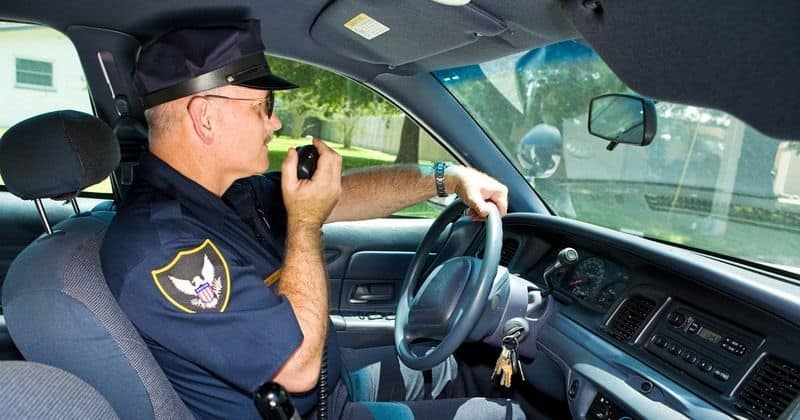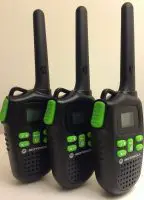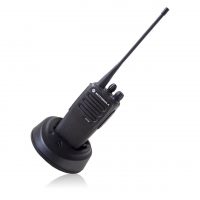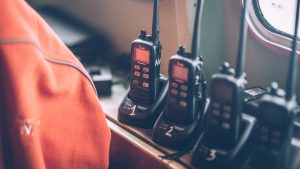
I think most people are familiar with the usage of radio codes in movies, who hasn’t heard some cop character utter the phrases “10-4” or “roger wilco”. In this article I will provide some background so you can use these radio communication codes with your own walkie-talkie.
Radio communication codes are used to clarify, simplify and standardize communication over two-way radios such as walkie-talkies. These communication codes are short phrases that can easily be understood by receivers and thus reduce misunderstanding. Everyone can use these codes, but they are mostly associated with law enforcement agencies such as the police.
The most well-known radio communication codes are the ten-codes. There are other communication codes in use, such as Q codes in amateur or ham radio and aviation, but I will not focus on these in this article as they are not so widely known.
Table of Contents
Ten-codes
As said before, ten-codes (also 10-codes) are the most well-know radio communication codes. The ten-codes are code phrases that can be used instead of common phrases in radio communications. The word ten is used to indicate that the next number is a code, which makes it easy to recognize these codes.
The ten-codes were standardized by the Association of Chief Police Officers in the past and used by law enforcement agencies and civilian CB radio users. However, over time different agencies used different meanings for the codes which actually undid the usefulness of the standardized radio codes.
This became particularly clear in the aftermath of hurricane Katrina in 2005 where there were several instances of inter-agency communication problems. After that Federal Emergency Management Agency (FEMA) actually discouraged the use of ten-codes and advocates the use of plain everyday language for radio communications.
But if you are using your walkie-talkies with friends or family it can still be fun to use these codes. So in the remainder of this article I will list the codes used by the police, so you can start using them yourself right away!
Police codes
I divided the codes used by the police in three categories: 10-codes, 11-codes and Hundred codes.
The 11-codes, or “eleven-codes”, are not used as often by the police as the 10-codes and are only used in certain areas. They are designed to facilitate the communication between police officers and police dispatchers.
The Hundred codes are three digit code used by the police to indicate certain types of crime. These codes are usually pronounced digit-by-digit, for example 187 as “one eight seven”.
Police scanner 10-codes
10-0 Caution
10-1 Reception poor
10-2 Reception good
10-3 Stop transmitting
10-4 Message received, understood
10-5 Relay message
10-6 Change channel
10-7 Out of service
10-7A Out of service, home
10-7B Out of service, personal
10-8 In service
10-9 Repeat message
10-10 Off duty
10-10A Off duty, home
10-11 Identify frequency
10-12 Visitor(s) present
10-13 Weather and road advice
10-14 Citizen w/suspect
10-15 Prisoner in custody
10-16 Pick up prisoner
10-17 Request for gasoline
10-18 Equipment exchange
10-19 Return(ing) to station
10-20 Location
10-21 Telephone
10-21A Advise home I will return at:
10-22 Disregard last assignment
10-23 Stand by
10-24 Request car-to-car transmit
10-25 Do you have contact with:
10-26 Clear
10-27 D.D.L. report
10-28 Registration request
10-29 Check for wants
10-29F Subject wanted, felony
10-29H Hazard potential from subject
10-29M Subject wanted, Misdemeanor
10-29V Vehicle wanted
10-30 Doesn’t conform to regulations
10-32 Drowning
10-33 Alarm sounding, audible
10-34 Assist at office
10-35 Time check
10-36 Confidential information
10-37 Identify operator
10-39 Can () come to the radio?
10-40 Is () available for phone call?
10-42 Check the welfare of/at:
10-43 Call a doctor
10-45 Condition of patient?
10-45A Good
10-45B Serious
10-45C Critical
10-45D Dead
10-49 Proceed to:
10-50 Under influence of drugs
10-51 Drunk
10-52 Resuscitator
10-53 Man down
10-54 Possible dead body
10-55 Coroner case
10-56 Suicide
10-56A Suicide attempt
10-57 Missing person
10-59 Security check
10-60 Lock-out
10-61 Miscellaneous public service
10-62 Meet a citizen
10-62A Take a report from a citizen
10-62B Civilian standby
10-63 Prepare to copy
10-64 Found property
10-66 Suspicious person
10-67 Person calling for help
10-68 Telephone for police
10-70 Prowler
10-71 Shooting
10-72 Gun involved
10-73 How do you receive?
10-79 Bomb threat
10-80 Explosion
10-86 Any radio traffic?
10-88 Assume post
10-91 Animal
10-91A Animal, stray
10-91B Animal, noisy
10-91C Animal, injured
10-91D Animal, dead
10-91E Animal, bite
10-91G Animal, pickup
10-91J Animal, pickup collect
10-91L Animal, leash law violation
10-91V Animal, vicious
10-95 Need ID tech unit
10-97 Arrived at scene
10-98 Available to assign
Police scanner 11-codes
11-10 Take report
11-24 Abandoned vehicle
11-25 Traffic hazard
11-26 Abandoned bicycle
11-27 10-27 W/driver held
11-28 10-28 W/driver held
11-40 Advise if ambulance needed
11-41 Ambulance needed
11-42 No ambulance needed
11-44 Deceased person (Coroner Req’d)
11-48 Furnish transportation
11-51 Escort
11-52 Funeral detail
11-54 Suspicious vehicle
11-55 Officer being followed by auto
11-56 11-55 W/dangerous persons
11-57 Unidentified auto at assignments
11-58 Radio monitored, use phone
11-59 Intensive attention: high hazard, business areas
11-60 Attack in high hazard area
11-65 Signal light out
11-66 Defective signal light
11-78 Aircraft accident
11-79 Accident – Ambulance sent
11-80 Accident – Major injuries
11-81 Accident – Minor injuries
11-82 Accident – No injuries
11-83 Accident – No detail
11-84 Direct traffic
11-85 Tow truck required
11-94 Pedestrian stop
11-95 Routine traffic stop
11-96 Checking suspicious vehicle
11-97 Time/security check on patrol
11-98 Meet:
11-99 Officer needs help!
Police Hundred Code
187 Homicide
207 Kidnapping
207A Kidnapping attempt
211 Robbery
211A Robbery alarm
211S Robbery alarm, silent
217 Assault with intent to murder
240 Assault
242 Battery
245 Assault with a deadly weapon
246 Shooting at inhabited dwelling
261 Rape
261A Attempted rape
273A Child neglect
273D Wife beating – Felony
288 Lewd conduct
311 Indecent exposure
314 Indecent exposure
374B Illegal dumping
390 Drunk
390D Drunk, unconscious
415 Disturbance
417 Person with a gun
417A Person with a knife
459 Burglary
459A Burglar alarm
459S Burglar alarm, silent
470 Forgery
480 Hit and run – Felony
481 Hit and run – Misdemeanor
484 Petty theft
487 Grand theft
488 Petty theft
502 Drunk Driving
503 Auto theft
504 Tampering with a vehicle
505 Reckless driving
507 Public nuisance
510 Speeding or racing vehicles
586 Illegal parking
594 Malicious mischief
595 Runaway car
604 Throwing missiles
647 Lewd conduct
653M Threatening phone calls




